“MUDDY WORKS”, a representation of the world of mud-dyeing
Tomotake is the husband-and-wife design duo. Masahiro and Hiroko Tomotake are making fabric goods together by using mud-dyed cloth and original textiles. They collaborated with KOKKA to launch their textile brand “MUDDY WORKS” in 2012. Since then, they have created printed fabrics with gentle atmosphere. Here is a special interview with Mr. and Mrs. Tomotake about their activities as mud-dyeing artists and MUDDY WORKS.
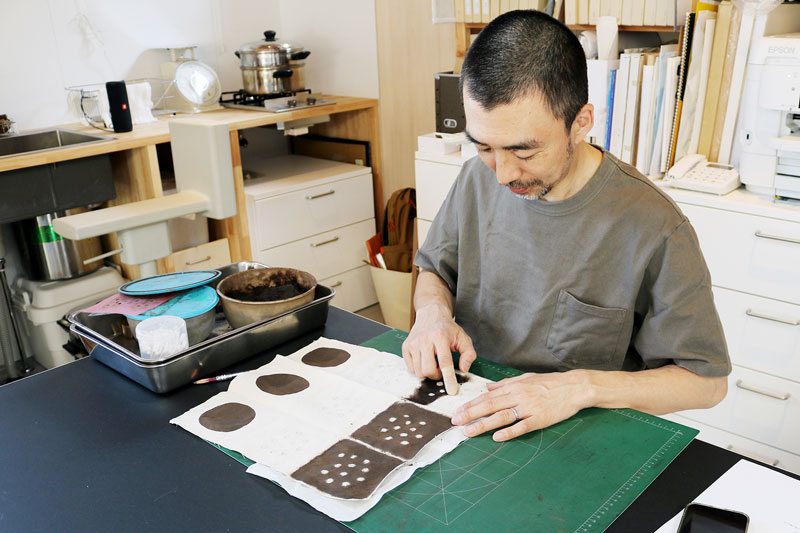
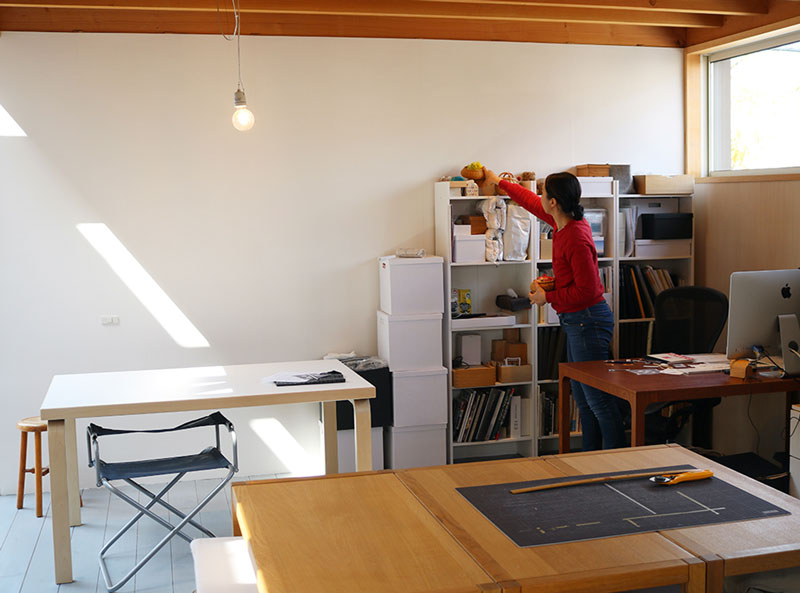
Draw patterns with fingers using mud
Kokka-fabric (KF): What is mud-dyeing or “dorozome”?
Masahiro Tomotake (M): It is one of the dyeing techniques with plants. When mud is applied to a pre-dyed fabric with tannin-rich plant, the tannin chemically reacts with the iron in the mud to produce a black color. In Japan, Doro Oshima Tsumugi made on the Amami Oshima Island is well known. I apply the ancient mud-dyeing technique for Tomotake’s products. I mix iron with moisture-retentive mud and then rub the paste-like mud on the fabric with my fingers to draw patterns. After it is dried, I apply heat and then wash it off.
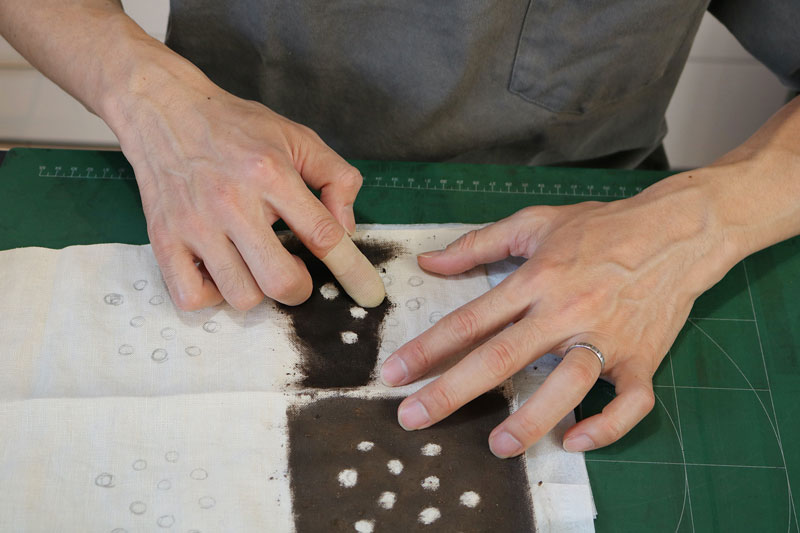
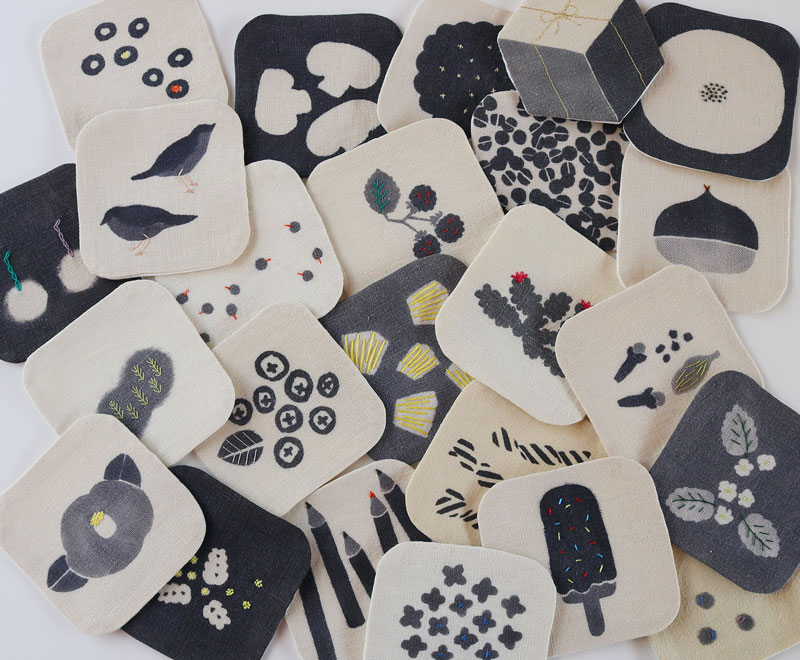
▲There are almost 40 varieties of linen coasters by Tomotake
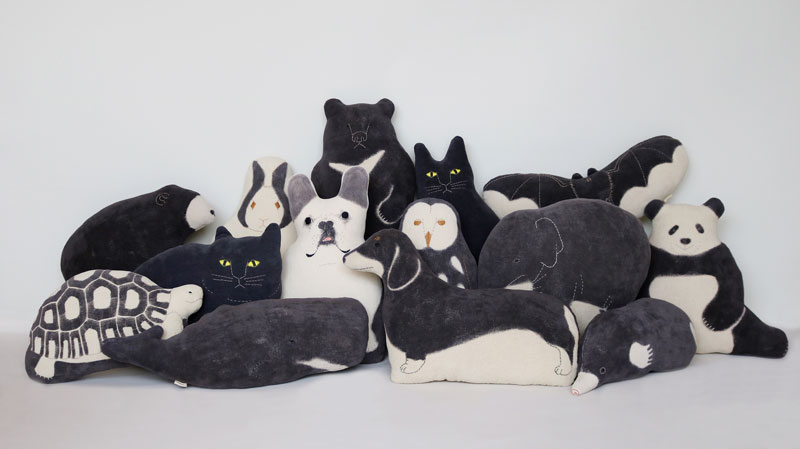
▲ Tomotake’s signature animal-shaped cushions. The design duo selects the animal to be the pattern for the cushion by taking account of colors and dyeing method.
Adorable anpan becomes a popular pattern
KF: Could you tell us the story behind the creation of the popular pattern “Anpan” in your fabric series?
M: We created the “Anpan” pattern along with “Cookie” and “Donut” patterns for an exhibition on the theme of treats.
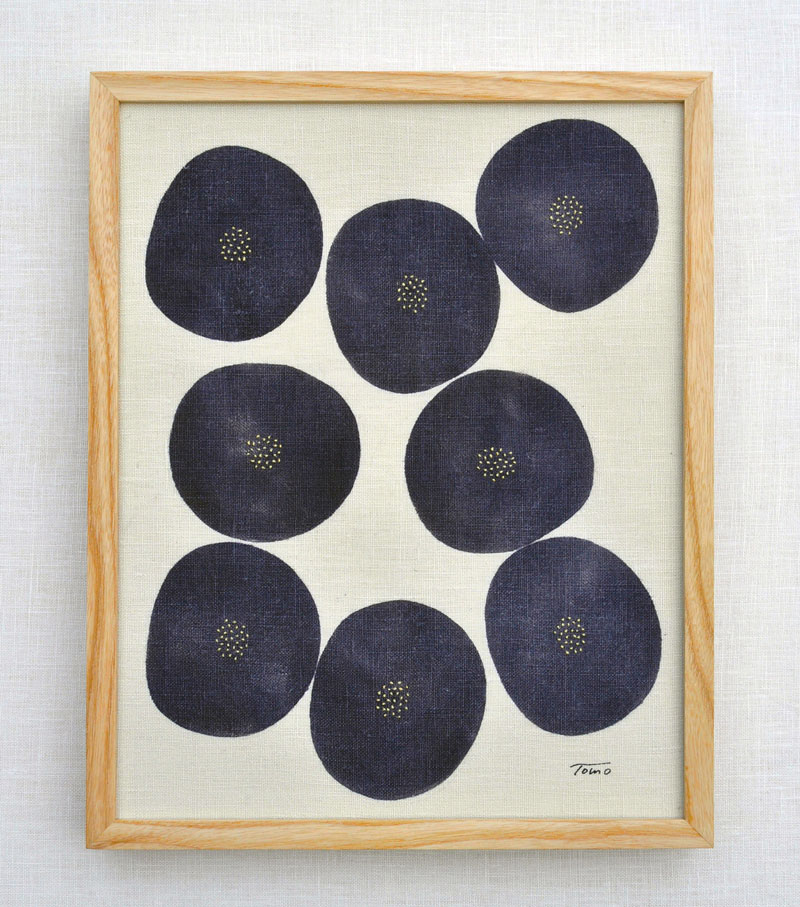
Hiroko Tomotake (H): You can find anpan (a Japanese sweet bun filled with red bean paste) in bakeries all throughout Japan, and I often buy anpan as a snack. One day, the more I looked at anpan, the more I realized it is lovely-looking. Fine embroidery was perfect to replicate sesame seeds or poppy seeds, which are often sprinkled on top of anpan. Thus, we were able to create the pattern “Anpan” without any particular difficulty.
When creating fabric, we arranged the pattern of anpan not in regular circle but in slightly different shapes one by one at random to represent the appearance of real bakery trays full of anpan. I think the simplicity of the pattern – the contour of anpan embellished with fine embroidery details of sesame or poppy seeds – attracted people.
Daily life and working style
KF: Your studio relocated in October 2021. How is your work at the new studio?
M: We put up our residence and studio in separate buildings on the same site. The living room and the studio are connected by the outdoor wooden deck. With no walls, I have to motivate myself to cross over to the studio on rainy days or cold days in winter.

H: Although it is a small studio, separating it from our living space has helped me draw a line between work and personal times. Even being in the working space, I can still monitor what our children are doing in the living room through the studio’s big window along the deck. The situation that our residence is just a stone’s throw from the studio allows me to work without worry.
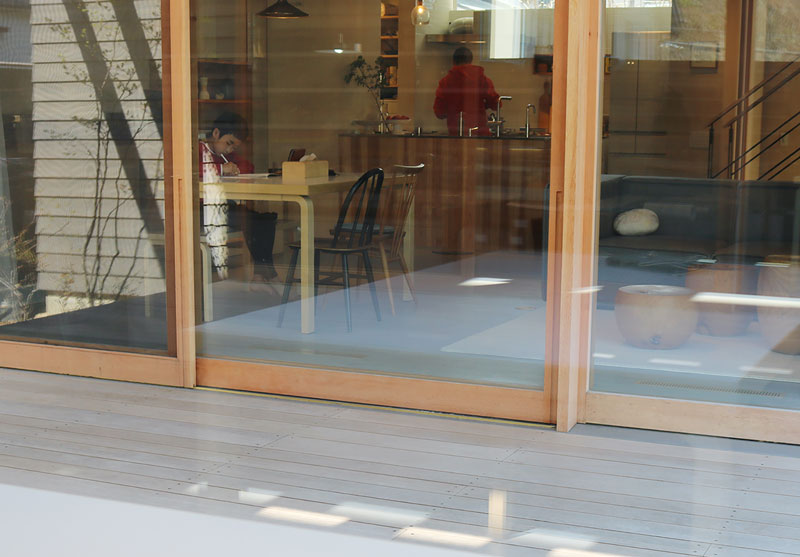
Motivation for their creative activities
KF: 16 years have passed since you started working together in 2006 as Tomotake. How could you keep yourself motivated so long for creative activities?
M: It is very important for two of us to take the time to develop our idea or create each pattern, without being bound by theme or formality. I feel a sense of achievement when the idea takes shape over time. I am also more than happy when customers enjoy our products, and that is what keeps me motivated.
H: I have loved making something since I was a child. For me, creating products is an extension of what I love to do. We are able to continue our creative work thanks to the people who spread the work about our works. Besides the joy I feel when we finish a project that satisfies ourselves, the existence of customers who look forward to having our products encourage me to keep working.
MUDDY WORKS was launched in 2012
KF:What triggered the launch of MUDDY WORKS in 2012?
H: KOKKA was making fabrics for an apparel brand which we provided a textile design. Our design caught the attention of KOKKA’s textile department, and then they approached us.
KF:MUDDY WORKS has a concept of making printed fabric based on the designs created by Tomotake with mud-dyeing and embroidery. How did you decide on it?
H: At first, we were asked by KOKKA to make printed fabric with the same coloration and taste as our mud-dyed works. But we just felt something different about making “mud-dyed-look” printed fabric. So, we suggested to create colorful fabrics with the patterns of our mud-dyed and embroidery goods, by taking advantages of textile printing.
M: Since mud-dyeing can only produce shades of beige and charcoal gray, we add color with embroidery. Therefore, I was very interested in being able to depict freely with colors that we had done by mud-dyeing.
KF: What was your impression when you saw the printed fabrics for the first series in 2012?
H: Everything was new to us. And, in fact, we had too little knowledge about the textile printing methods. I was actually shocked at how different they were from what we had expected when we saw the first sample fabrics. Then we made an earnest request to remake the printing plate. The colors were also not shown as we had envisioned, and so we had to go through a process of trial and error before we were satisfied with the coloration. Everything was going on like that, and I feel sorry for the inconveniences we caused to everyone at KOKKA and the printing factory. I could not be more grateful for their supports and patience. It was all thanks to them that we were able to make fabrics that we were satisfied with.
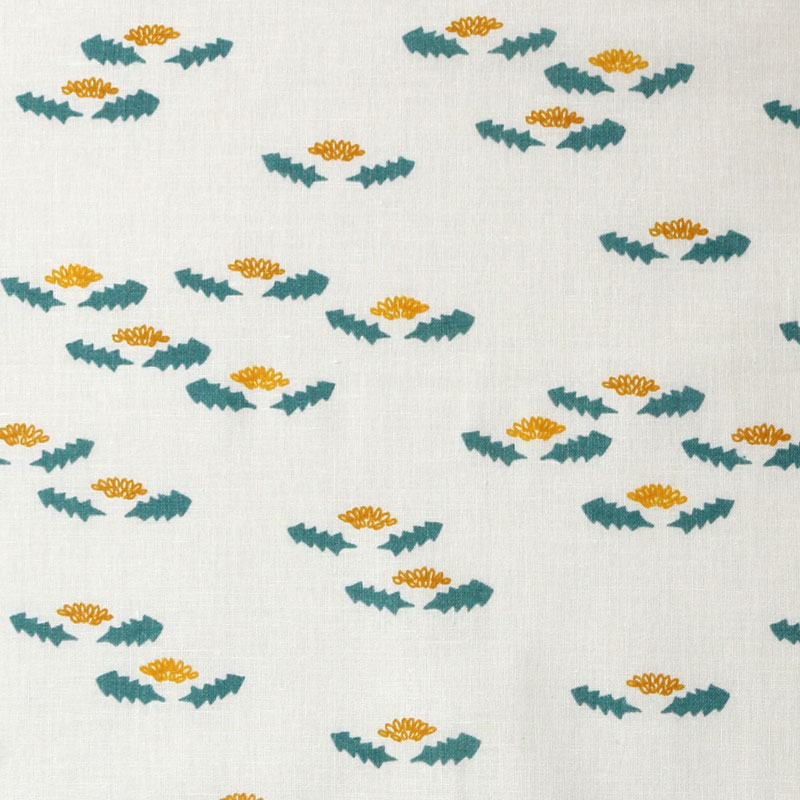
▲ “Dandelion” in the first series
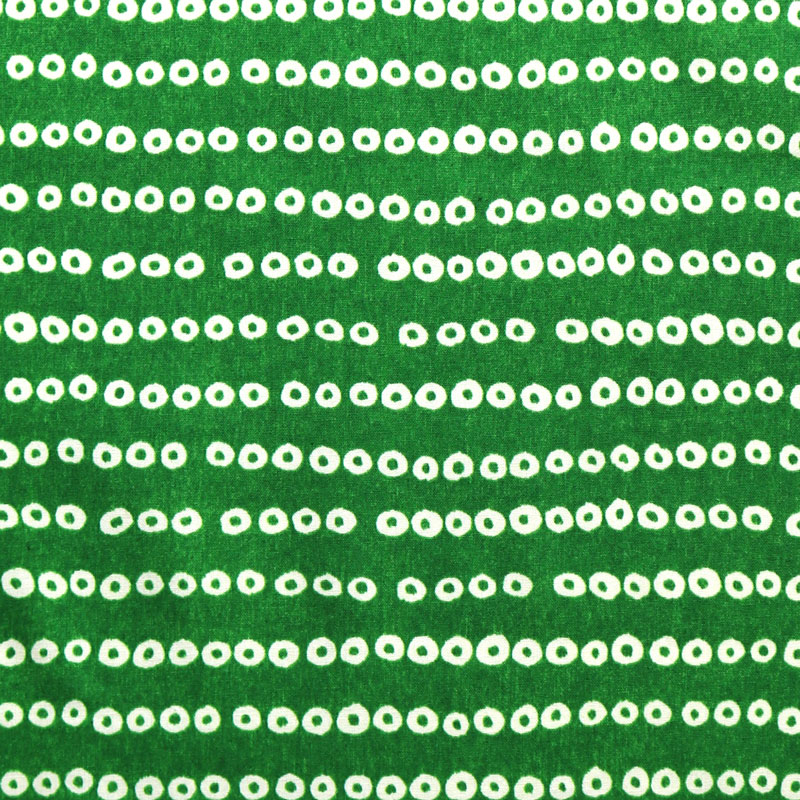
▲ “daisy lace” in the first series
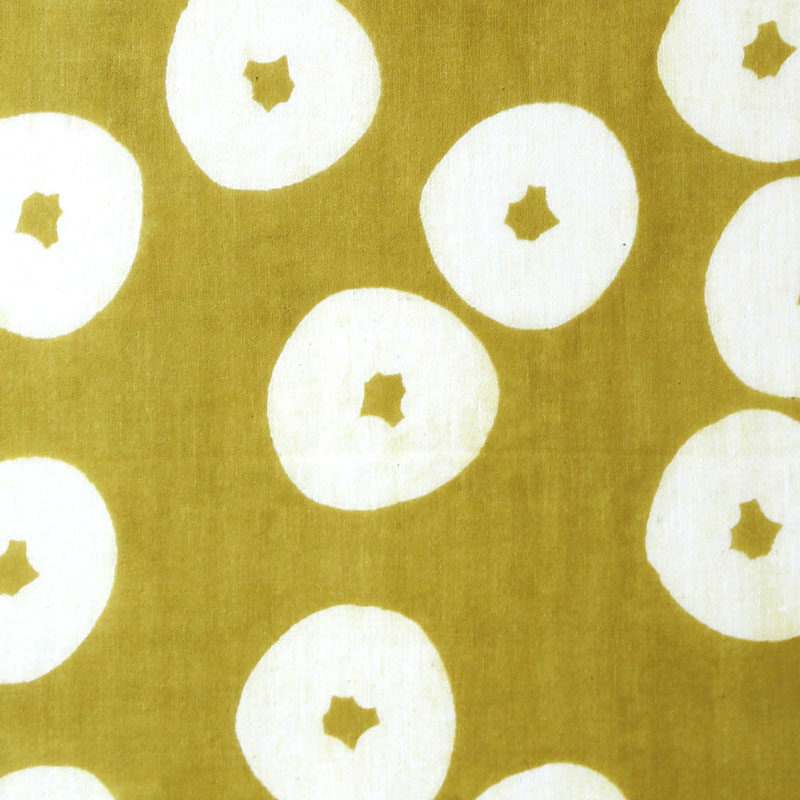
▲ “Donut” in the first series
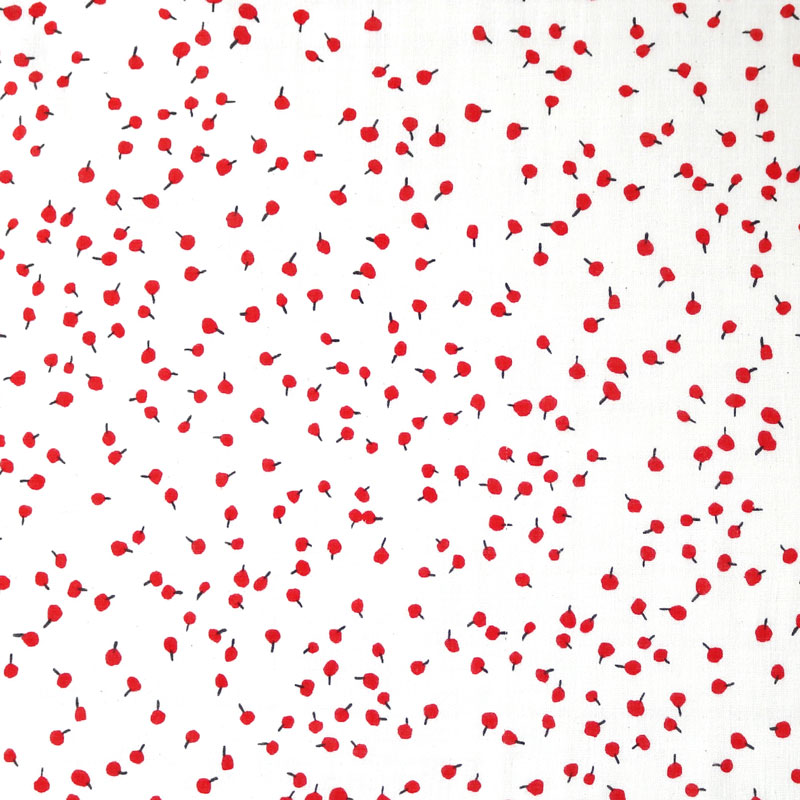
▲ “Currants” in the first series
KF: What do you find fun or interesting about creating MUDDY WORKS fabrics?
M: I like thinking about all kinds of things such as how the fabric looks as a single piece of cloth, how the goods made from the fabric look, considering the big picture, the details, types of fabric, and so on.
H: Printed fabrics allow me to design patterns that are not easily done by hand work, and to use bright colors which are not possible for mud-dyed cloth. It is also fun to think about what lovely goods I can make with those printed fabrics.
KF: Did you have any difficulty or trouble in making the printed fabrics?
H: Our lack of knowledge about the technical matters of textile printing resulted in more work for KOKKA and the printing factory. Through many attempts, we vaguely learned that it cannot be redone once the printing plate is made, and the available color schemes and types of fabric depend on the plate’s design. The color didn’t look same between the one printed on paper and the other that actually appeared on fabric. Therefore, when specifying colors to the printing factory, we submitted the chips with acrylic paint on cloth. Later I heard that a staff at the printing factory said that it was only Tomotake who had such a way to specify colors.
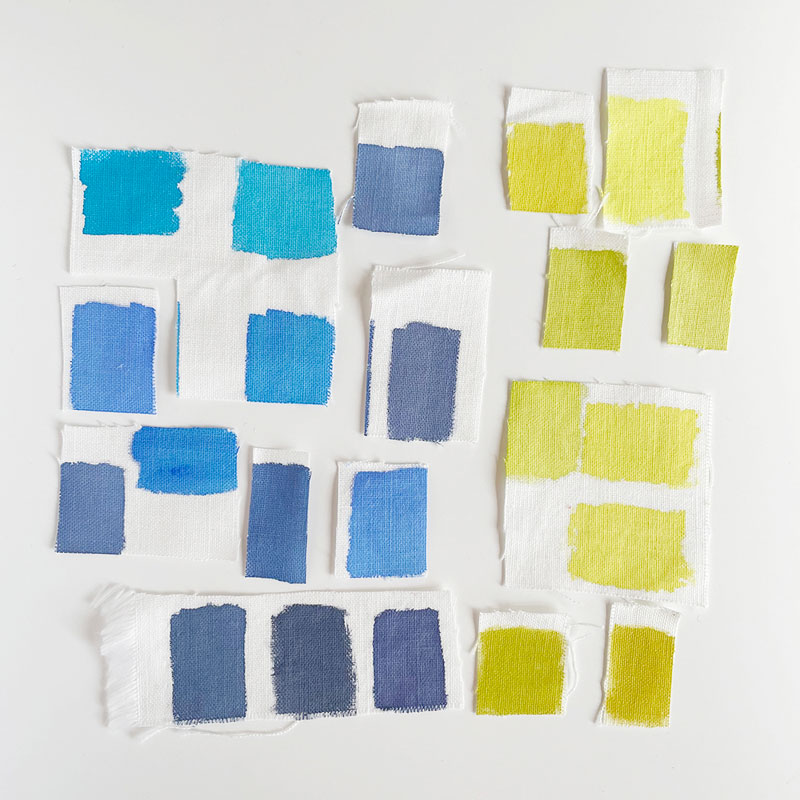
▲Chips with acrylic paint
KF: How do you decide on new fabric designs each year?
M: We consult KOKKA about the trends in the sewing industry as well as their demands.
Then, we come up with motifs to make a diverse lineup in each series, by using different types of fabrics, abstract pattern, floral pattern, and also considering purpose of use such as for clothing or for home décor.
H: We are grateful to be basically allowed to design freely.
Reprinted fabrics in commemoration of the 10th anniversary
KF: In 2021, our sewing lovers’ favorite patterns were back in commemoration of the 10th anniversary of MUDDY WORKS. How did you select these patterns?
H: It is “Trees” that was the most demanded pattern among customers. Many people made children’s aprons and clothes with the original Trees fabric. In reprinting the fabric, we selected soft double gauze and made the tree motif smaller.

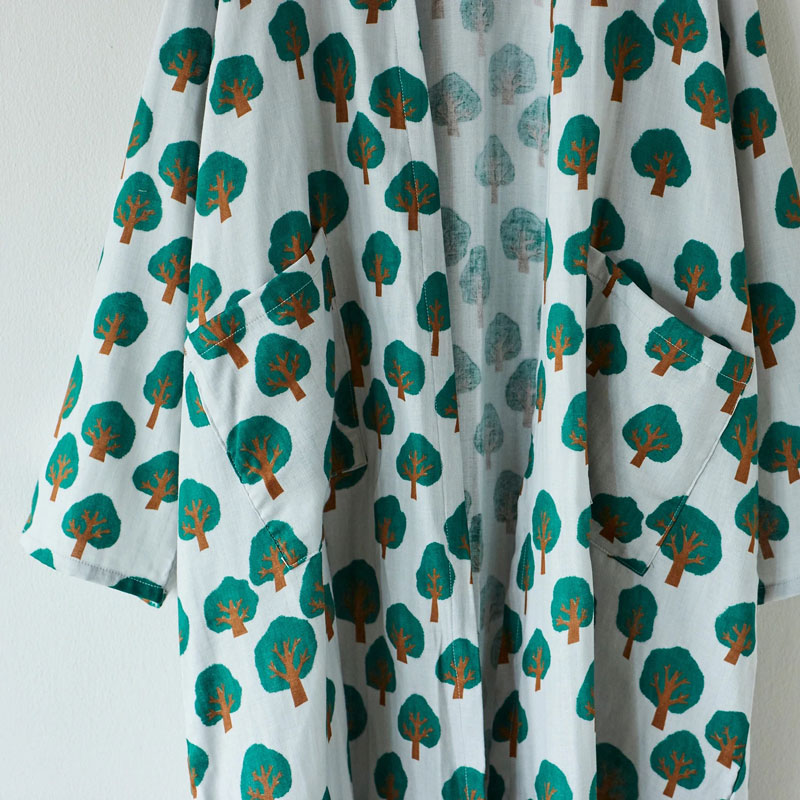
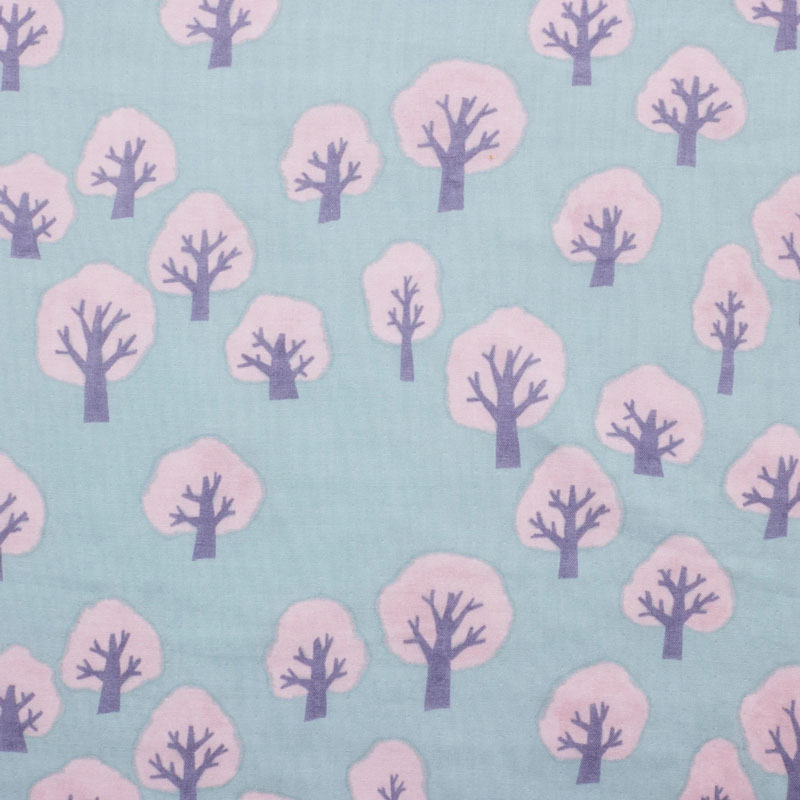
H: Among the numerous handicrafts made from “petals” fabric posted on Instagram, we were particularly impressed by the elegant long coat-like dress for adult. The small articles and children’s clothes made with the fabric were so cute, too. That’s why we decided to reprint “petals” fabric that could be used by people of all ages.
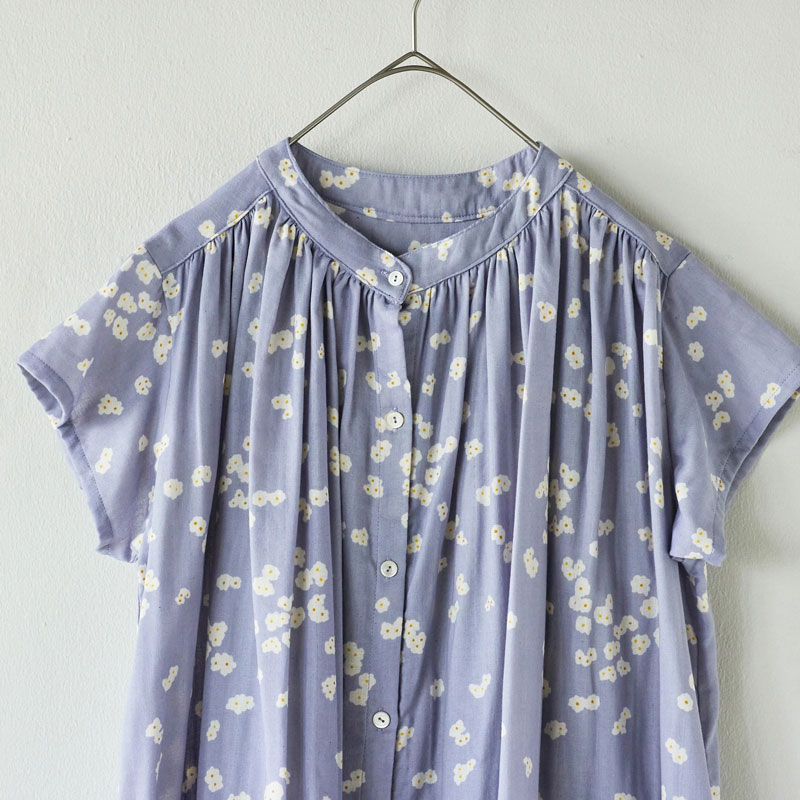

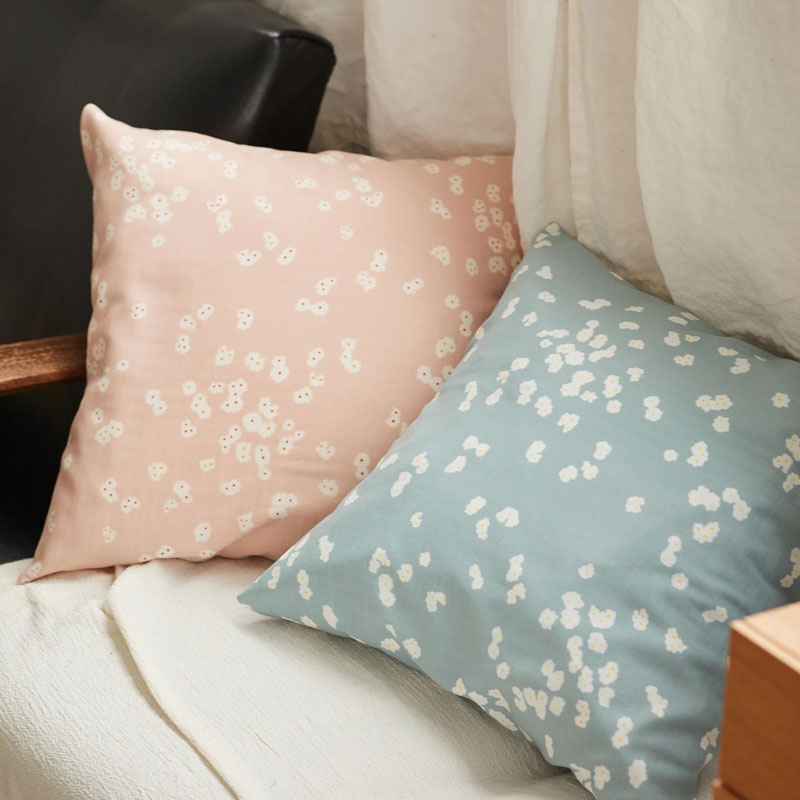
We saw that people enjoyed using “check & border” fabric by combining the check and border parts in creative ways. Even if you are not good at sewing, this pattern is perfect for a tablecloth that you can just spread out. Therefore, we chose this as a simple yet fun pattern that can be enjoyed in various ways.
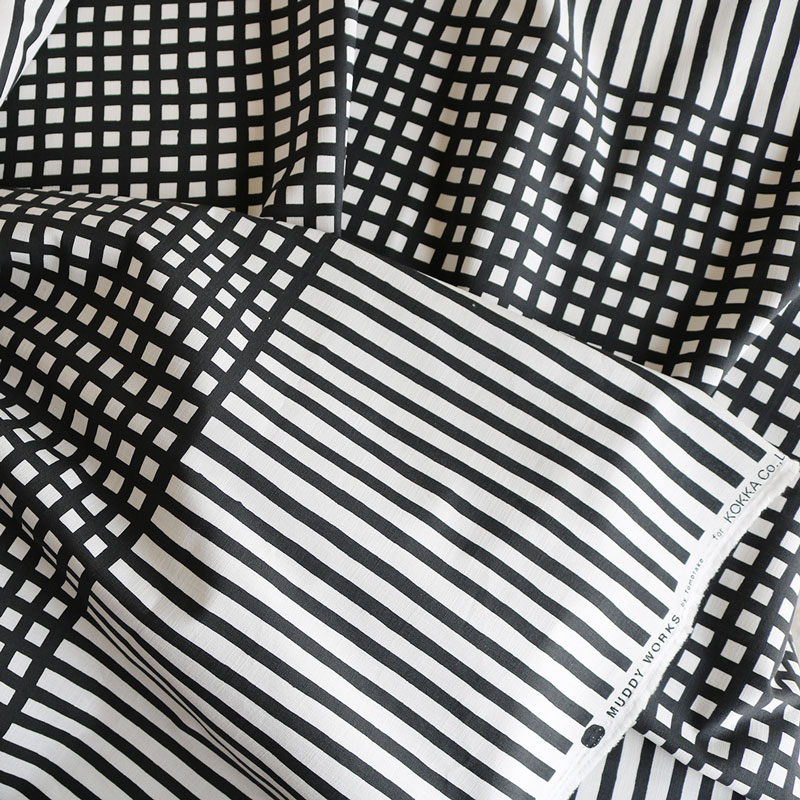

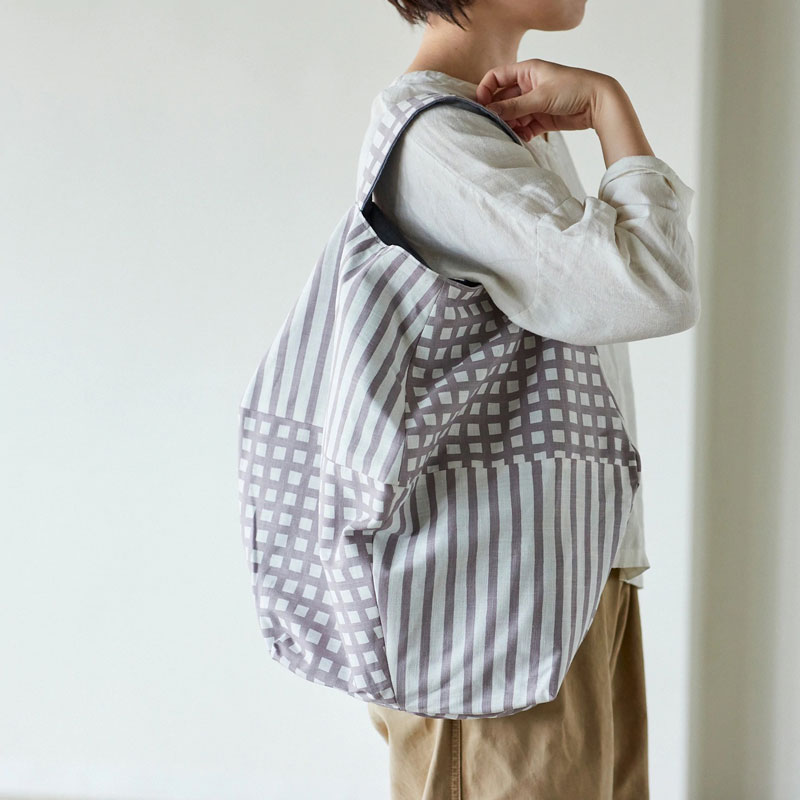
KF: Besides cotton lightweight canvas and double gauze, #9.5 canvas fabric is used for the latest series in 2022. As textile designers, what do you keep in mind about types of fabric and patterns?
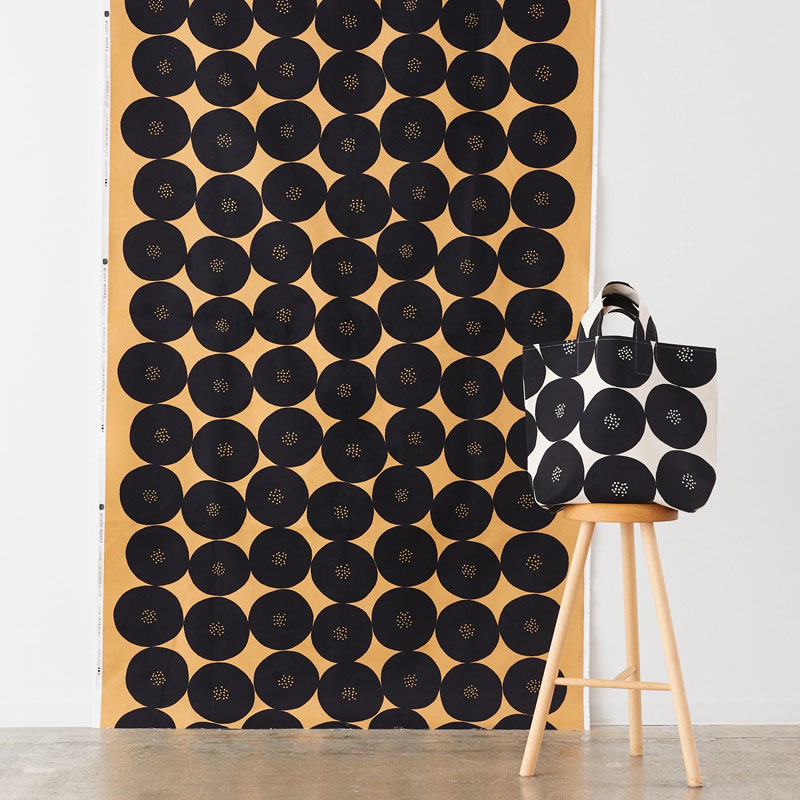
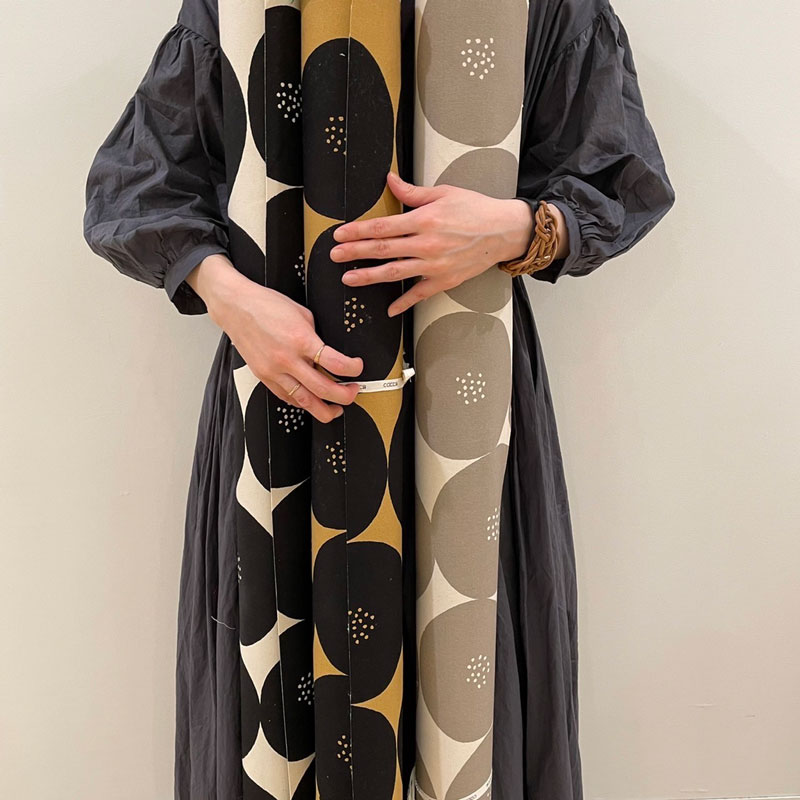
M: What can be made will inevitably vary depending on the type and character of fabric. We adjust the size of the motifs accordingly.
H: We made the motif smaller for double gauze fabric, which has a soft feel and is perfect for small children’s items. On the other hand, #9.5 canvas is thick and dense enough to support even a large-sized bag to hold its shape. We lined up large anpan closely to each other to match the canvas fabric’s presence.
Creation in various styles
KF: What would you like to do in the future?
M: Recently, I have been collaborating with one of the retailers of our goods to make ceramic objects. I do papercut art, too. Besides textile, I would like to explore various styles to create works if I have the opportunity.
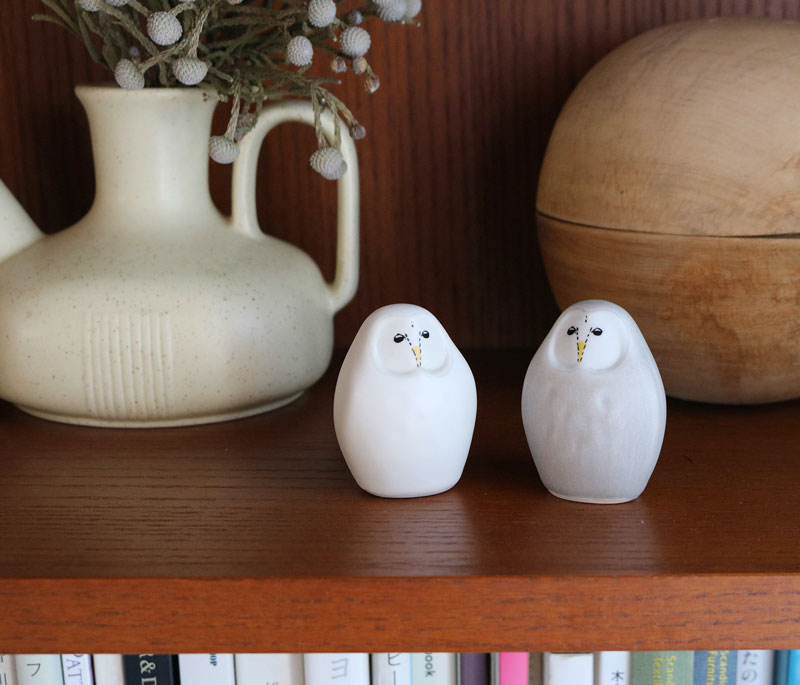
▲Ceramic objects
H: I have had my hands full making products so far, so I would like to be able to suggest how to incorporate those items into everyday life. I would also like to do illustration for picture books.
KF: In closing, please give your message to our readers.
M&H: Thank you very much for using fabrics by MUDDY WORKS. We will continue to take on small challenges one by one, in order to create textiles that will be loved by everyone. Please enjoy our fabrics.
KF: Thank you!
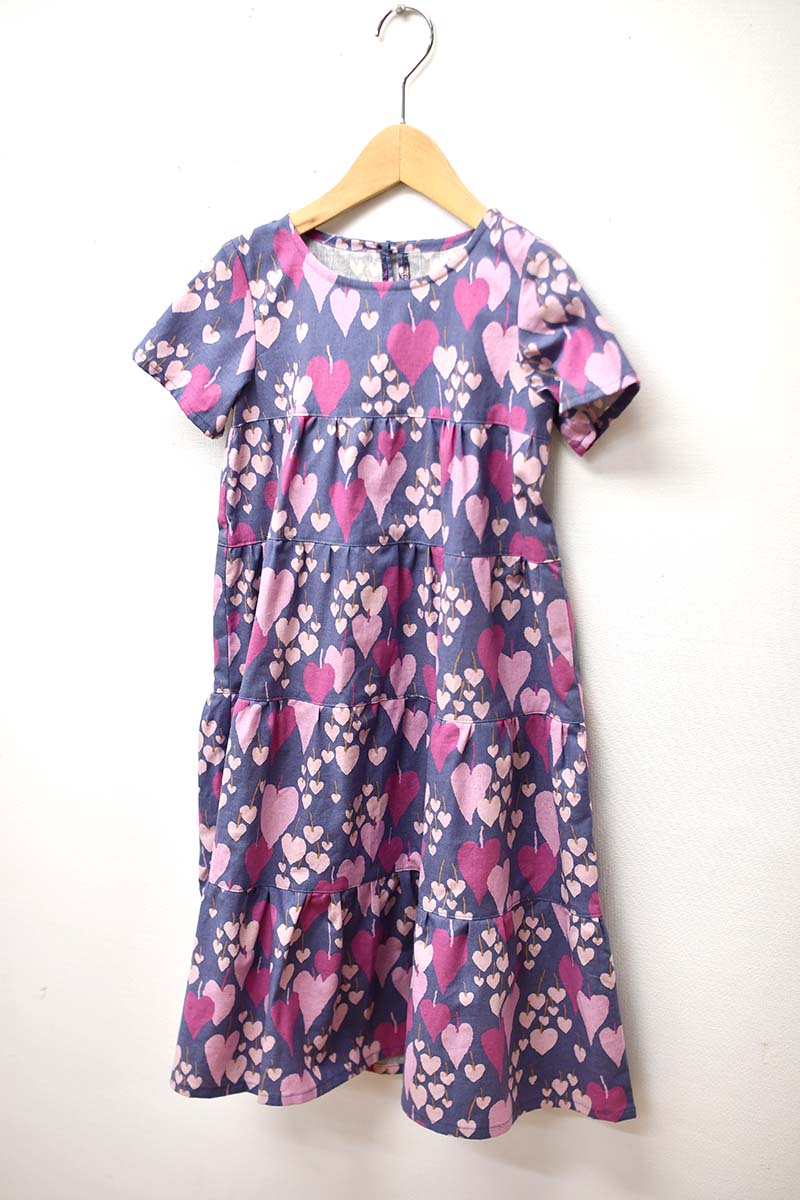

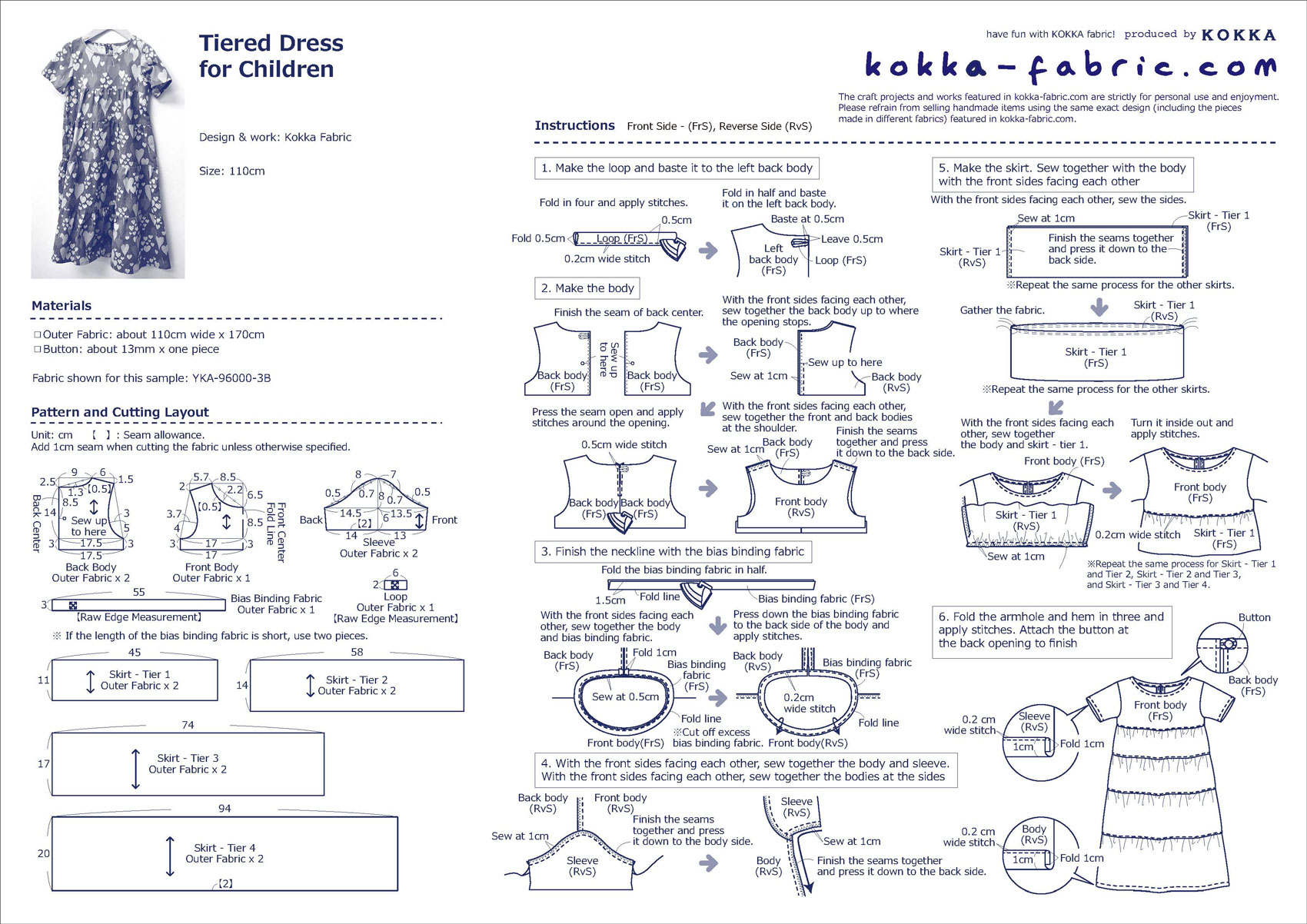

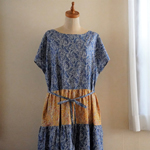 Tiered Dress – Sewing Instructions
Tiered Dress – Sewing Instructions Children’s Dress with Three-Tiered Frills – Sewing Instructions
Children’s Dress with Three-Tiered Frills – Sewing Instructions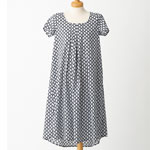 Front Tuck Dress with an Elegant Chest Line – Sewing Instructions
Front Tuck Dress with an Elegant Chest Line – Sewing Instructions
























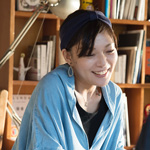 Visit artist 017: Ayano Ichiyanagi (Painter / Designer)
Visit artist 017: Ayano Ichiyanagi (Painter / Designer)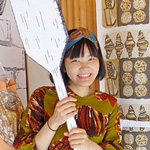 Visit Artist 016: Aco Sakamoto (Textile Designer)
Visit Artist 016: Aco Sakamoto (Textile Designer)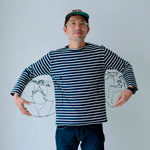 Visit artist 020: Manabu Ogawa (Wire artist)
Visit artist 020: Manabu Ogawa (Wire artist)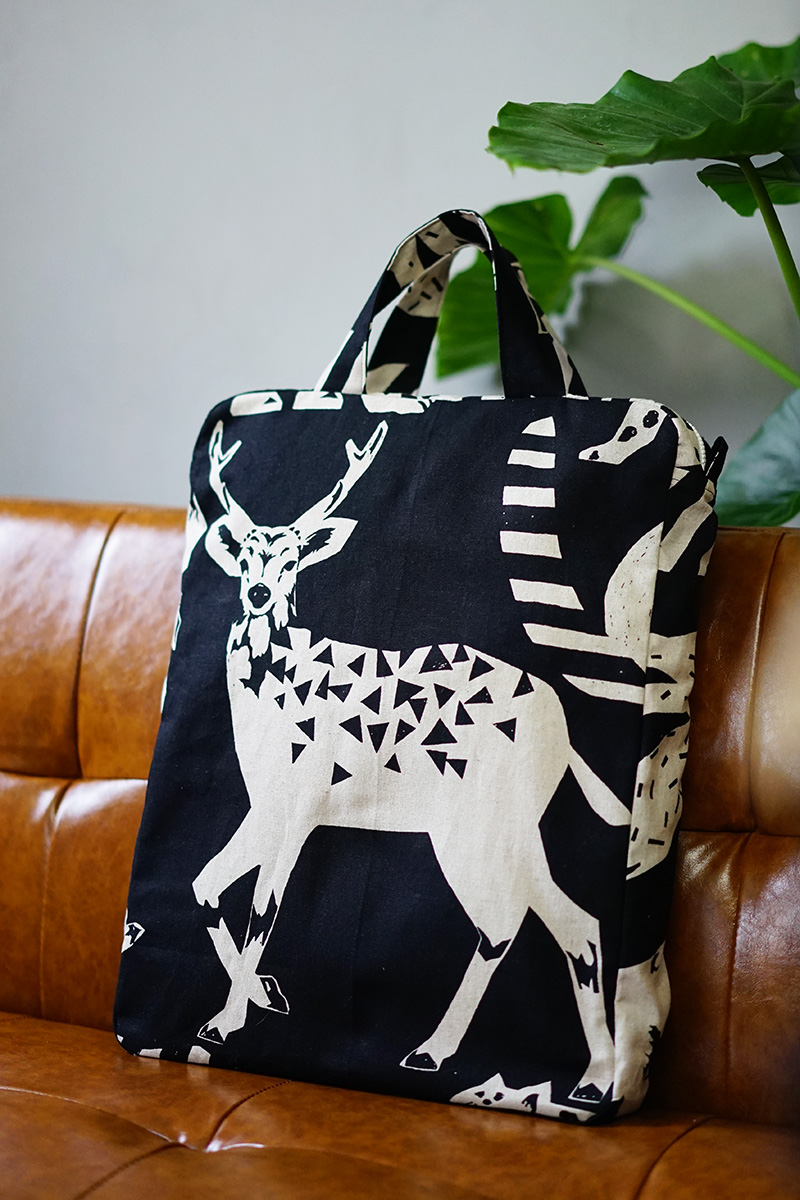
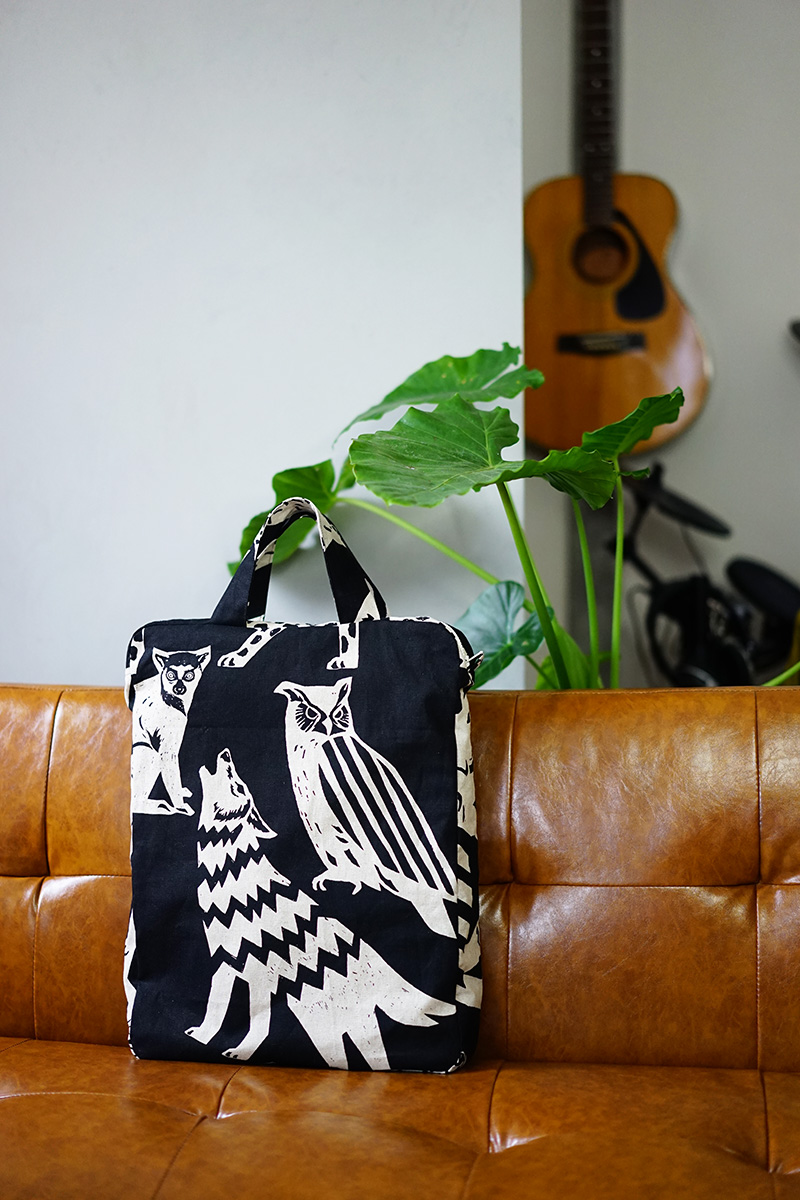
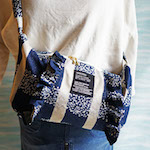 Perfect for Everyday Use – Sewing Instructions for Shoulder Bag Frills
Perfect for Everyday Use – Sewing Instructions for Shoulder Bag Frills Backpack Sewing Instructions
Backpack Sewing Instructions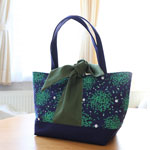 Ribbon Tote Bag -Sewing Instructions
Ribbon Tote Bag -Sewing Instructions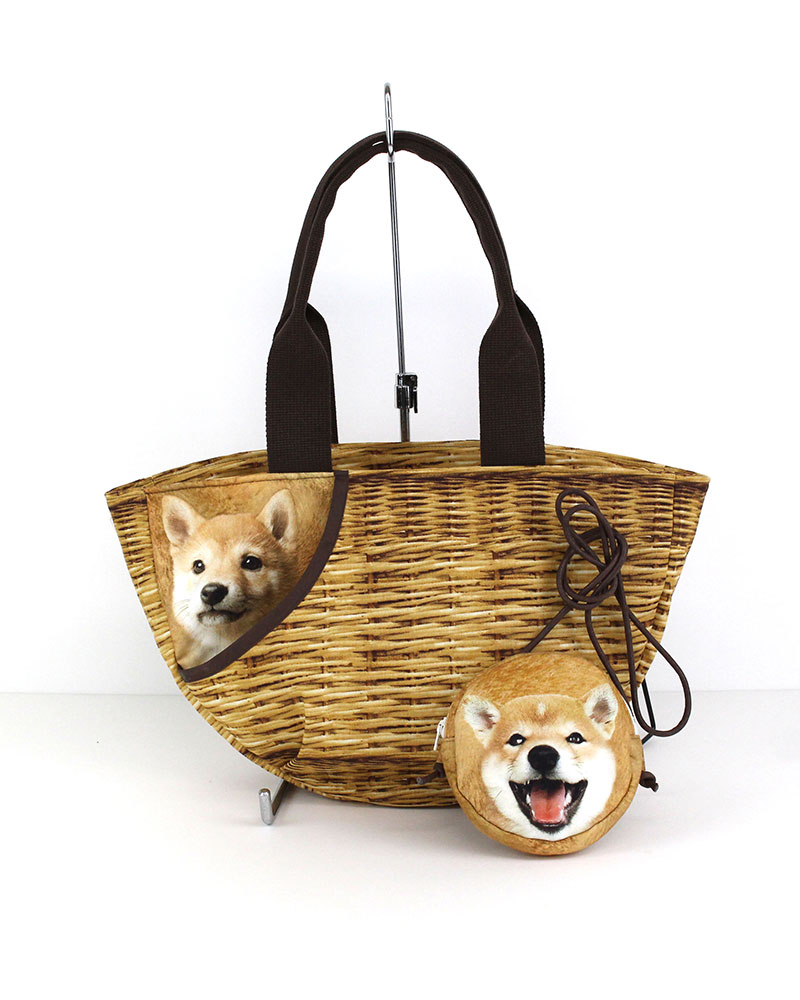

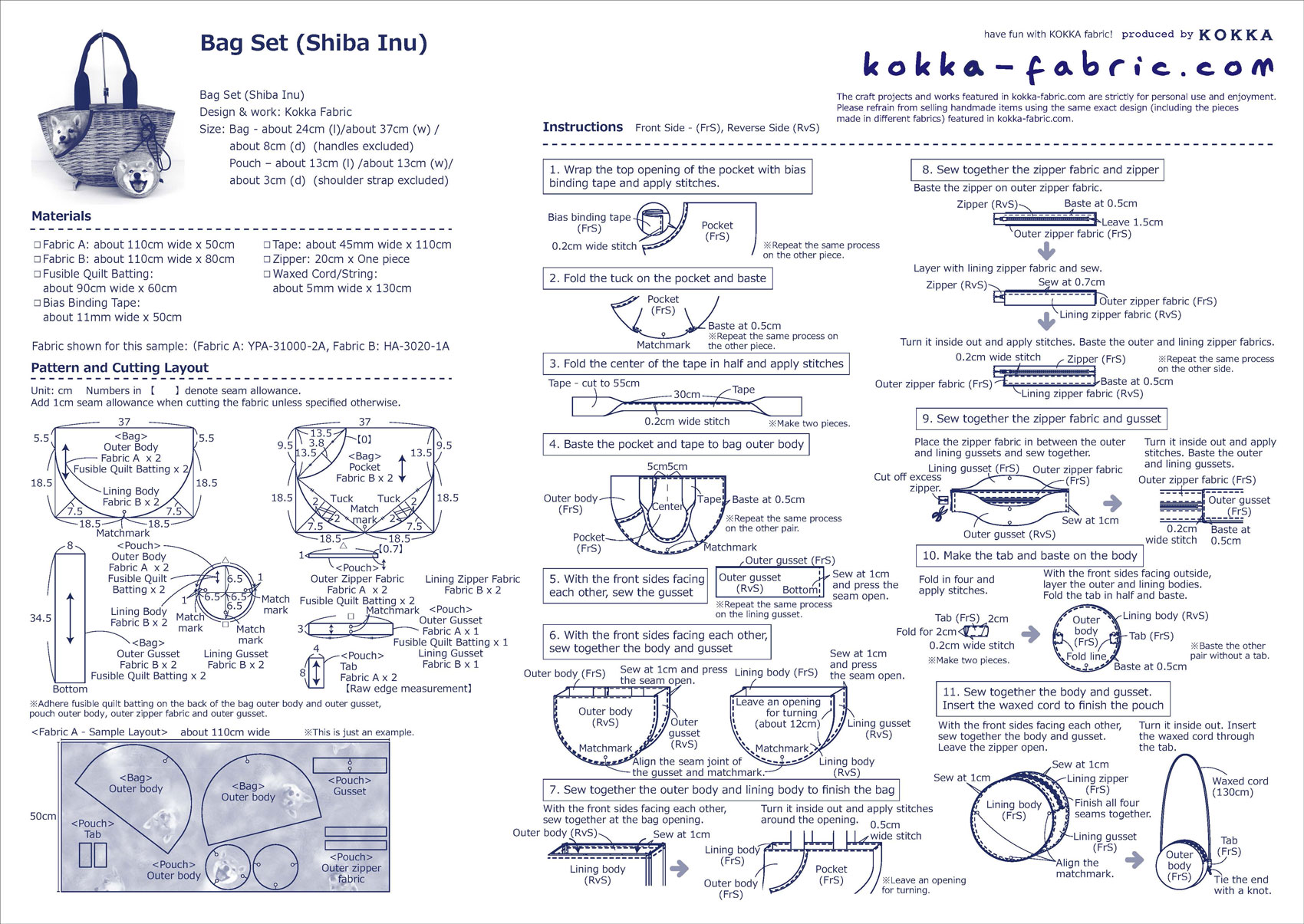
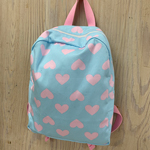 Zippered Backpack – Sewing Instructions
Zippered Backpack – Sewing Instructions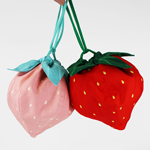 Strawberry Pouch – Sewing Instructions
Strawberry Pouch – Sewing Instructions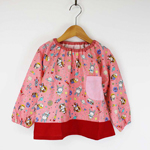 Smock, an Essential Item for Kindergarten and Nursery Schools – Sewing Instructions
Smock, an Essential Item for Kindergarten and Nursery Schools – Sewing Instructions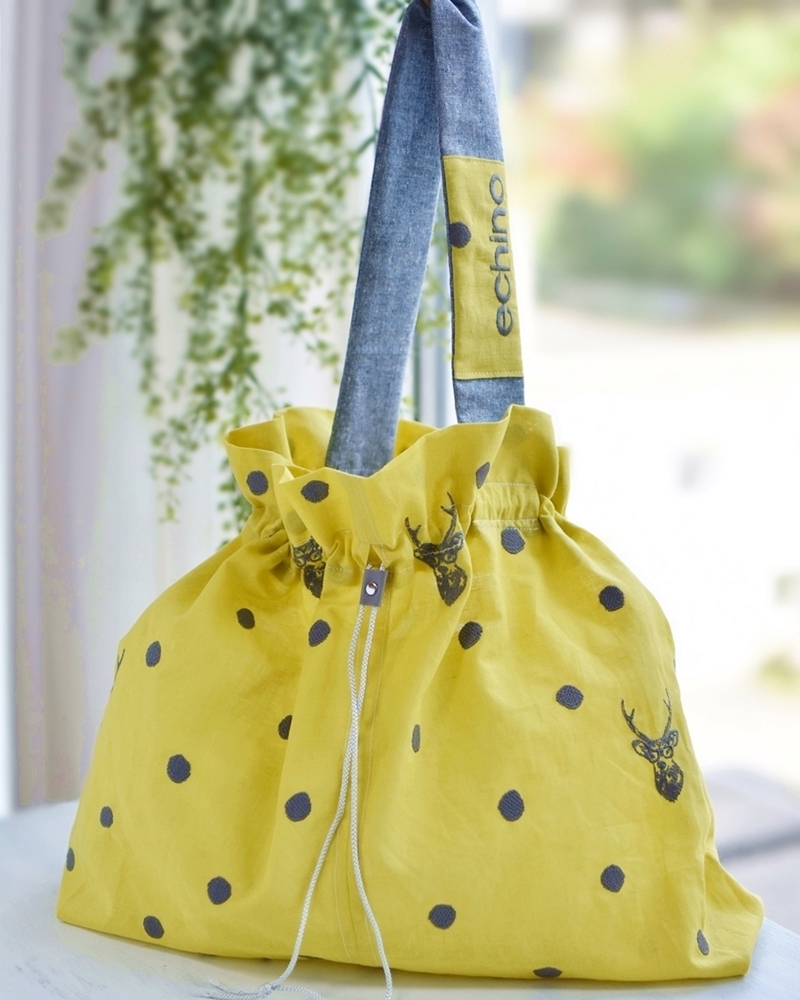
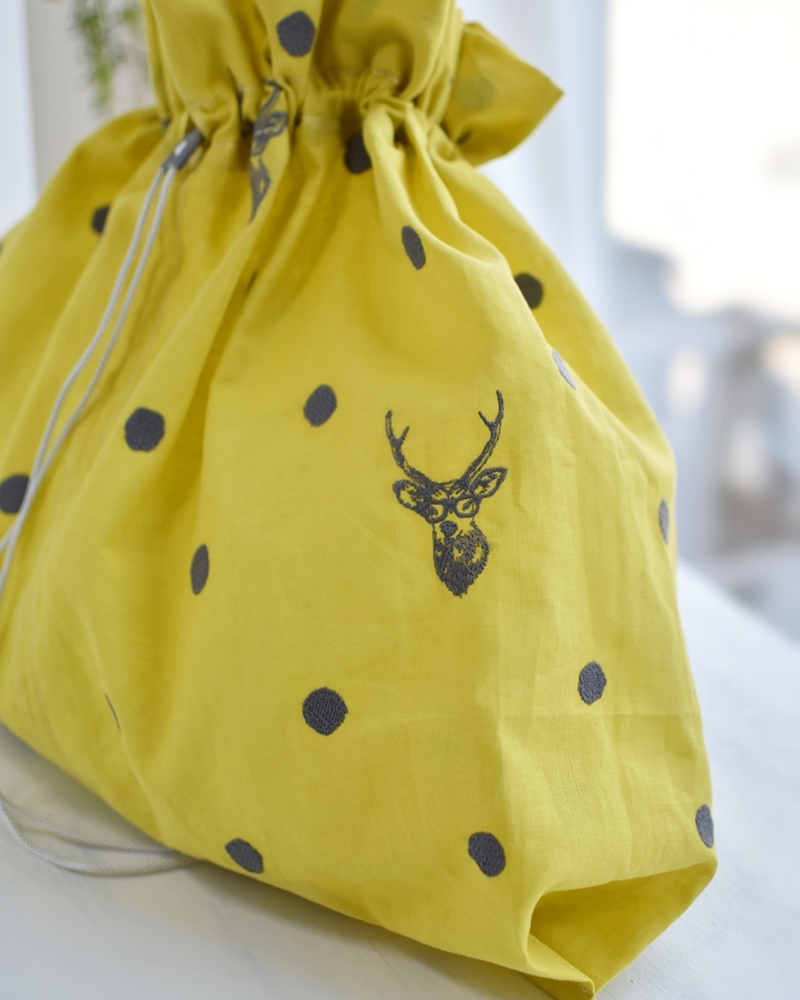
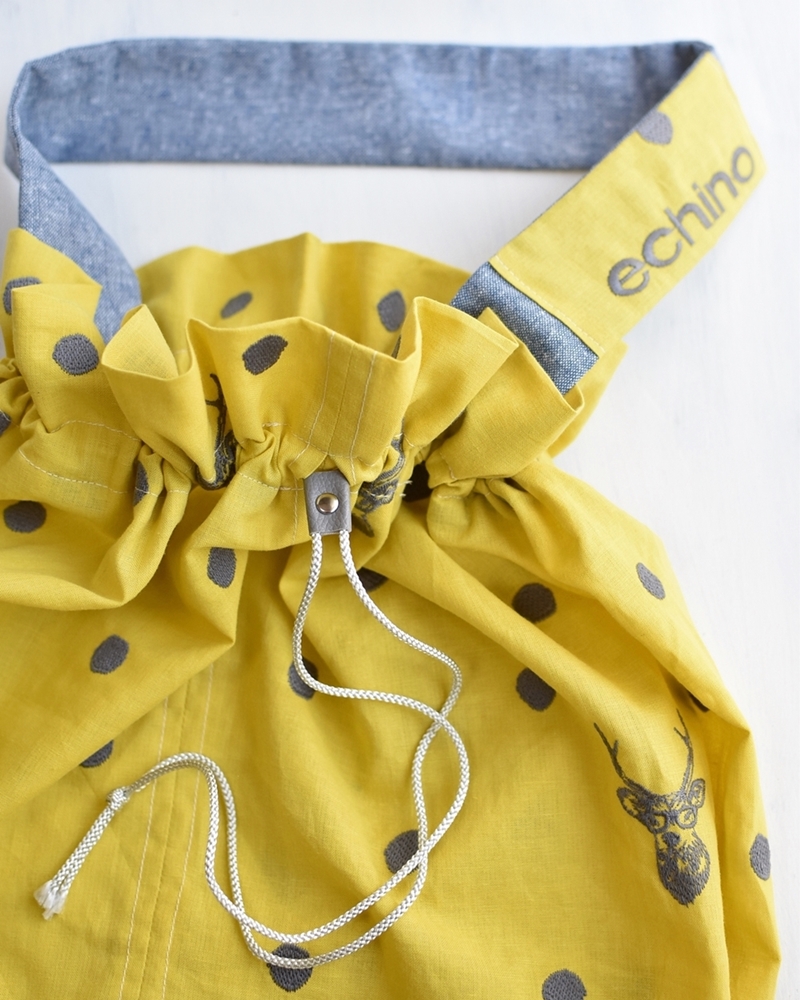
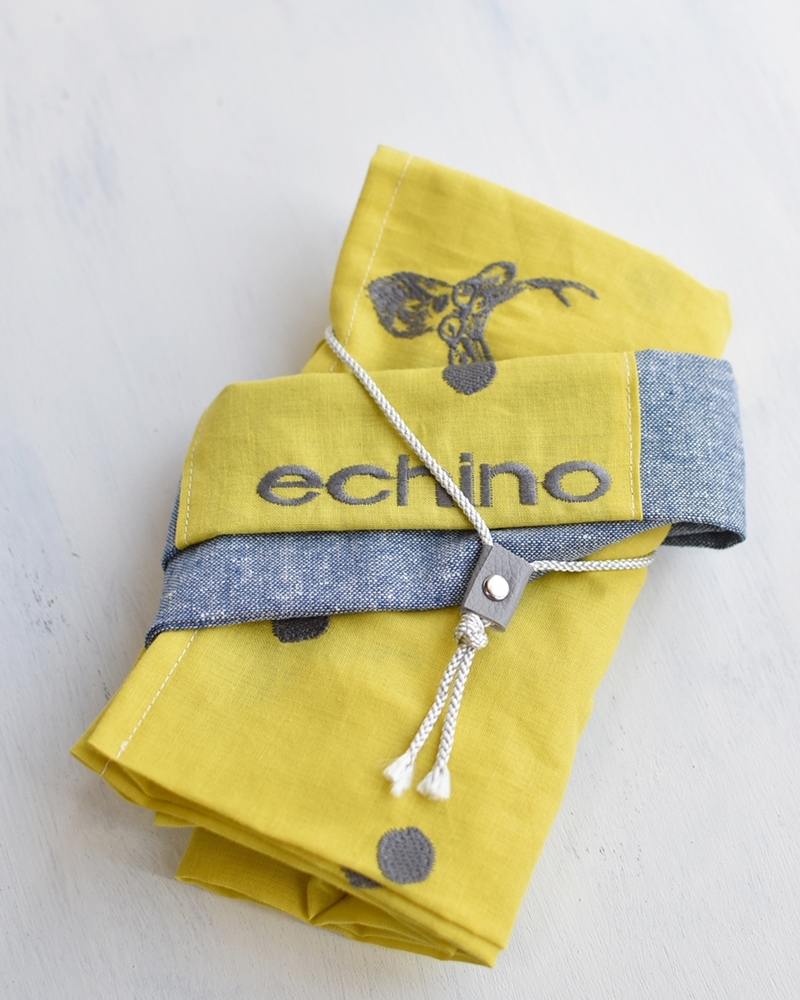
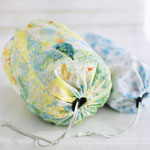 Convenient For Organizing and Storing! – Round Bottom Stuff Sack – Sewing Instructions
Convenient For Organizing and Storing! – Round Bottom Stuff Sack – Sewing Instructions Reusable Bag for Men – Sewing Instructions
Reusable Bag for Men – Sewing Instructions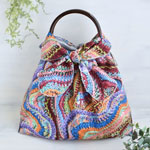 Extra Cute With A Lovely Ribbon♪ - Ring Handle Bag – Sewing Instructions
Extra Cute With A Lovely Ribbon♪ - Ring Handle Bag – Sewing Instructions